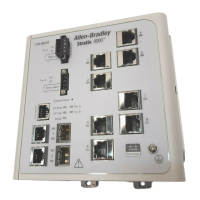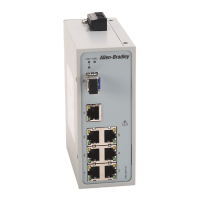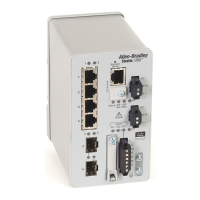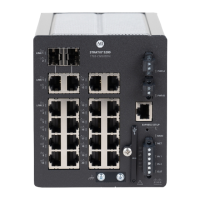104 Rockwell Automation Publication 1783-UM003G-EN-P - December 2012
Chapter 4 Manage the Switch via RSLogix 5000 Software
CIP Network Connections
CIP is an object-oriented connection-based protocol that supports two basic
types of messaging: Explicit and Implicit (I/O) connections. A maximum of 32
connections is available. Both connection types must use the switch password
before any switch parameters can be written. The password is the same one you
entered during Express Setup.
.
CIP Network Connections
Connection Description
Explicit messaging Explicit messaging connections provide generic, multi-purpose communication paths between two
devices. These connections are often referred to as messaging connections. Explicit messages
provide the typical request/response-oriented network communication. Each request is typically
directed at a different data item. Explicit messages can be used for configuring, monitoring and
troubleshooting the switch.
The Explicit Messaging interface is used by the RSLogix 5000 Add-on Profile for the switch.
I/O (implicit messaging) I/O connections provide dedicated, special purpose communication paths between a producing
application and one or more consuming applications. The application-specific I/O data that moves
through these connections is typically a fixed, cyclical structure.
The Switch supports two I/O connection choices.
• Input Only
• Exclusive Owner
Both connections are cyclic and adjustable from 300...5000 ms.
The Input Only connection contains a data structure with status information on the switch in general
and specific status on each of the ports. This connection is multicast and can be shared by multiple
controllers (connection originators).
The Exclusive Owner connection uses the same Input data structure as the Input Only connection, but
adds an Output data structure. The Output data contains a bit for each port that lets you enable or
disable each port separately. While the Input data on this connection can be shared (via multicast) by
multiple controllers, only one controller may own the Output data. If a second controller attempts to
open this connection, the connection will be rejected
Because the output data is sent cyclically by the controller, it
overrides any other attempt to enable or disable a port from other
software tools or visualization stations.

